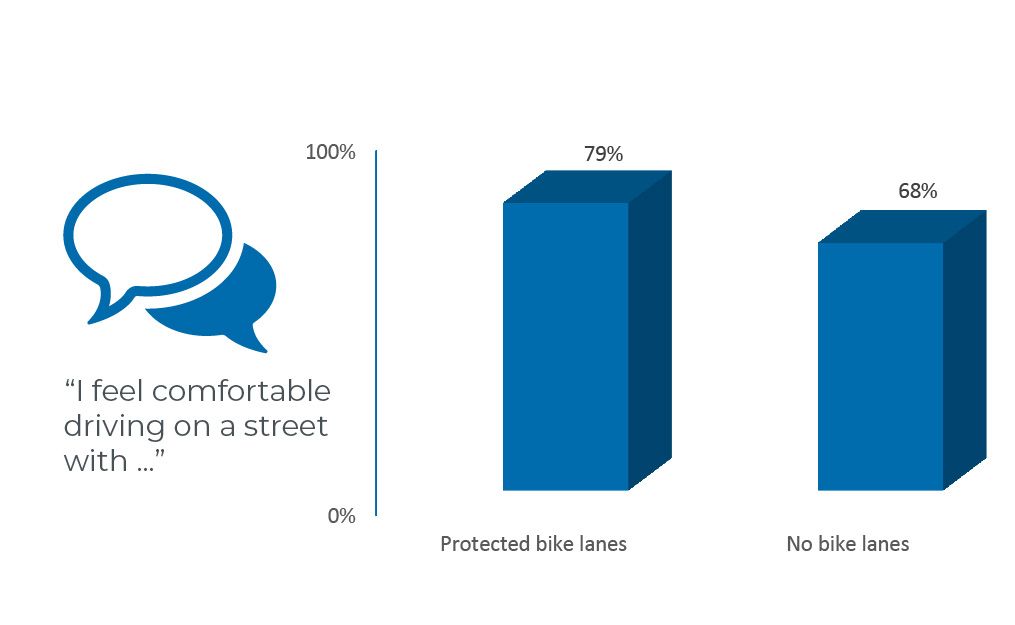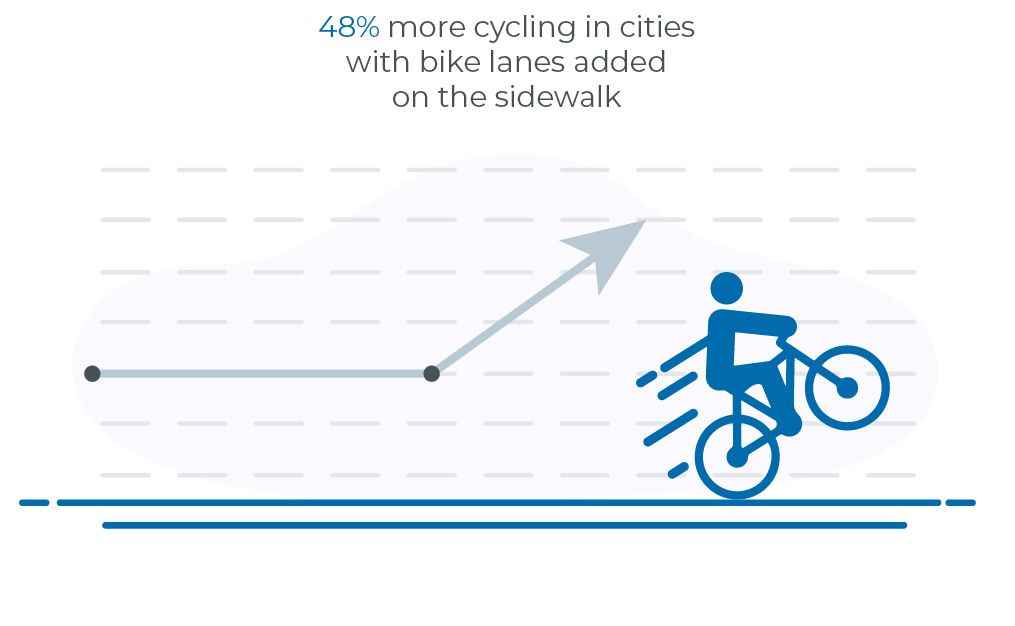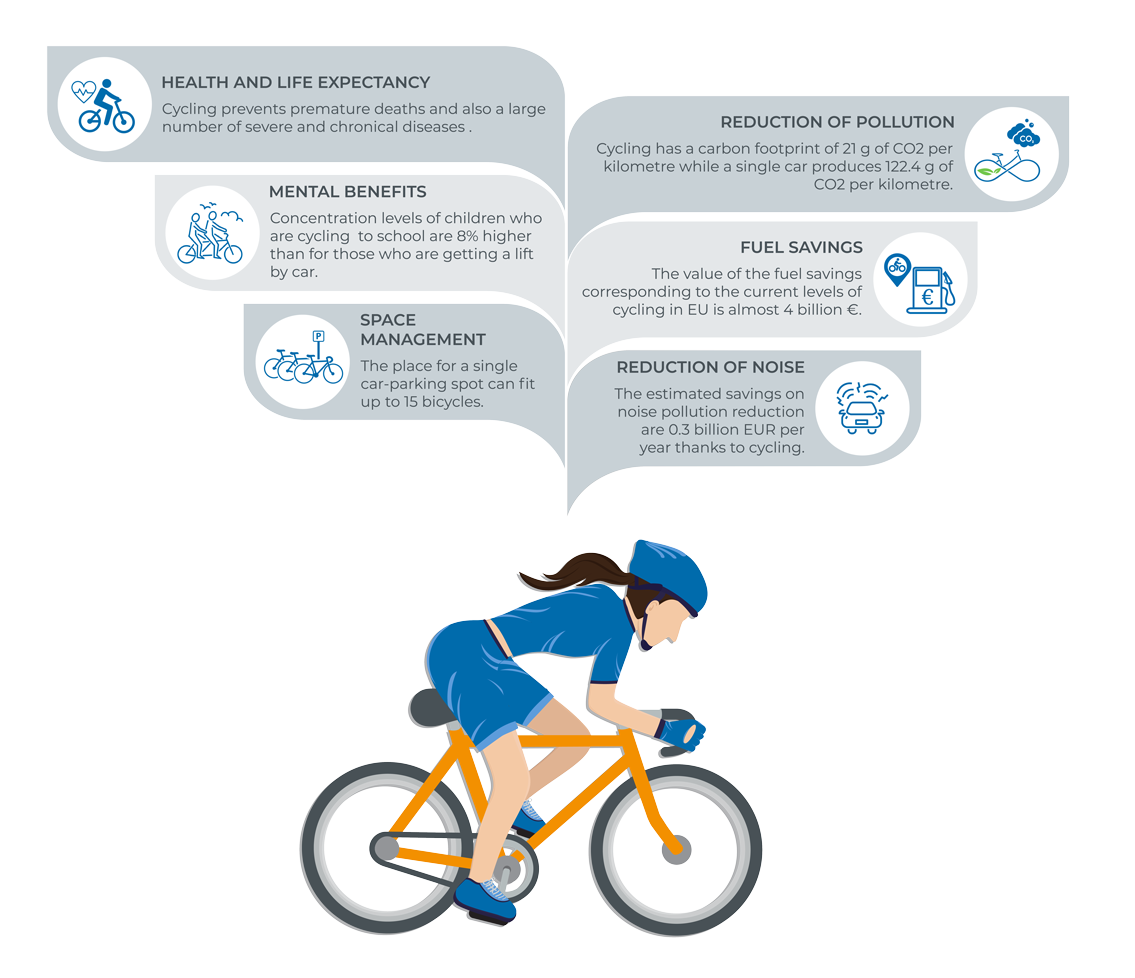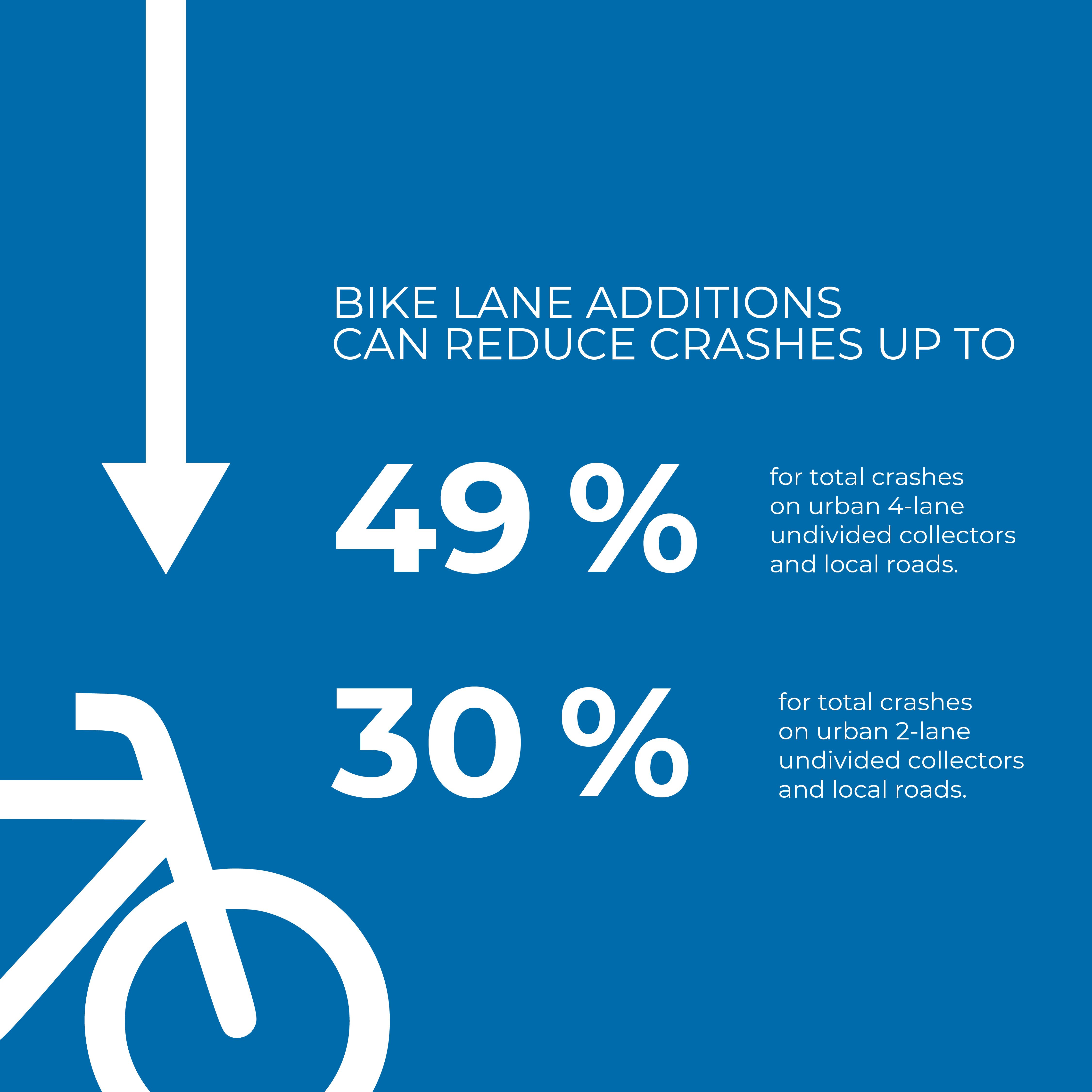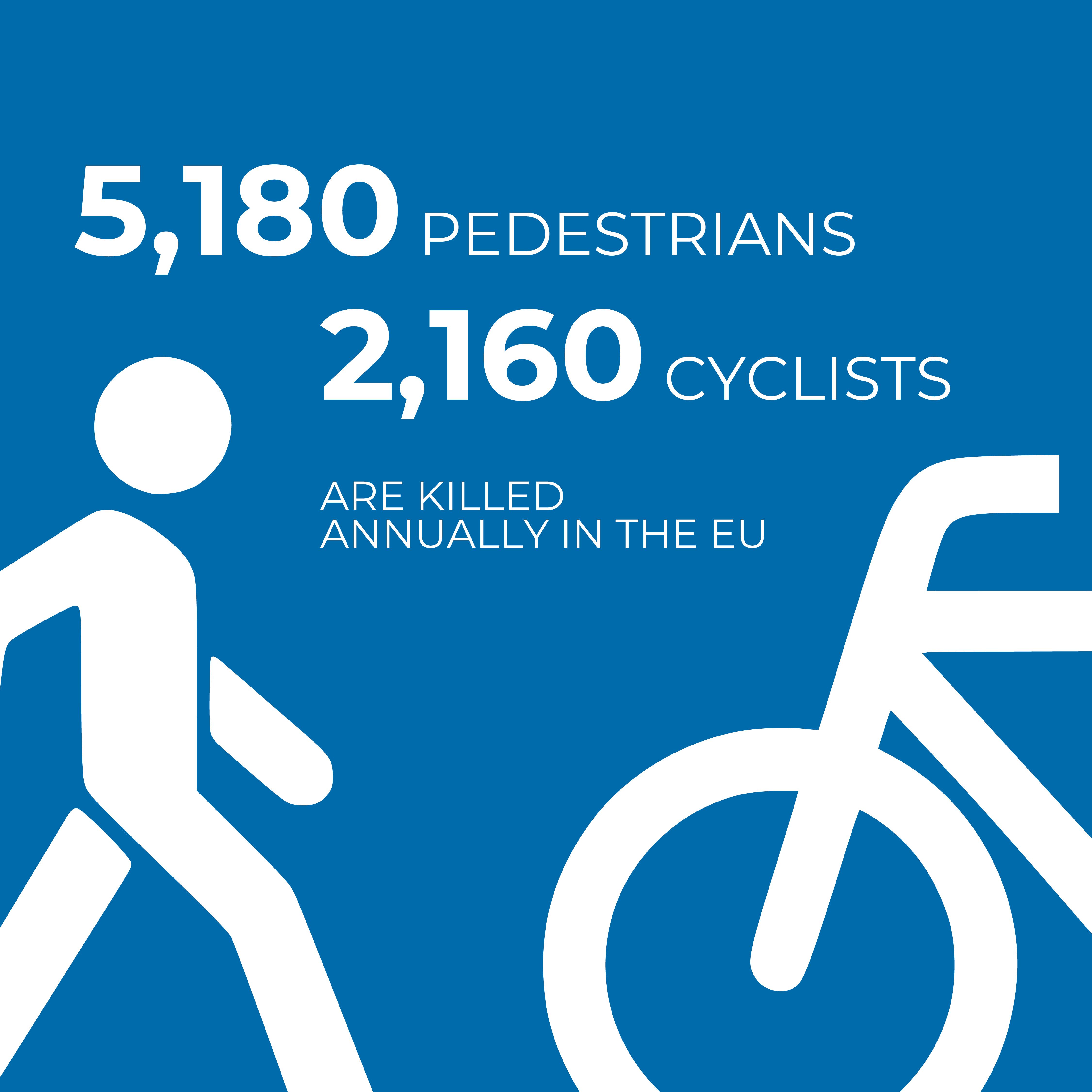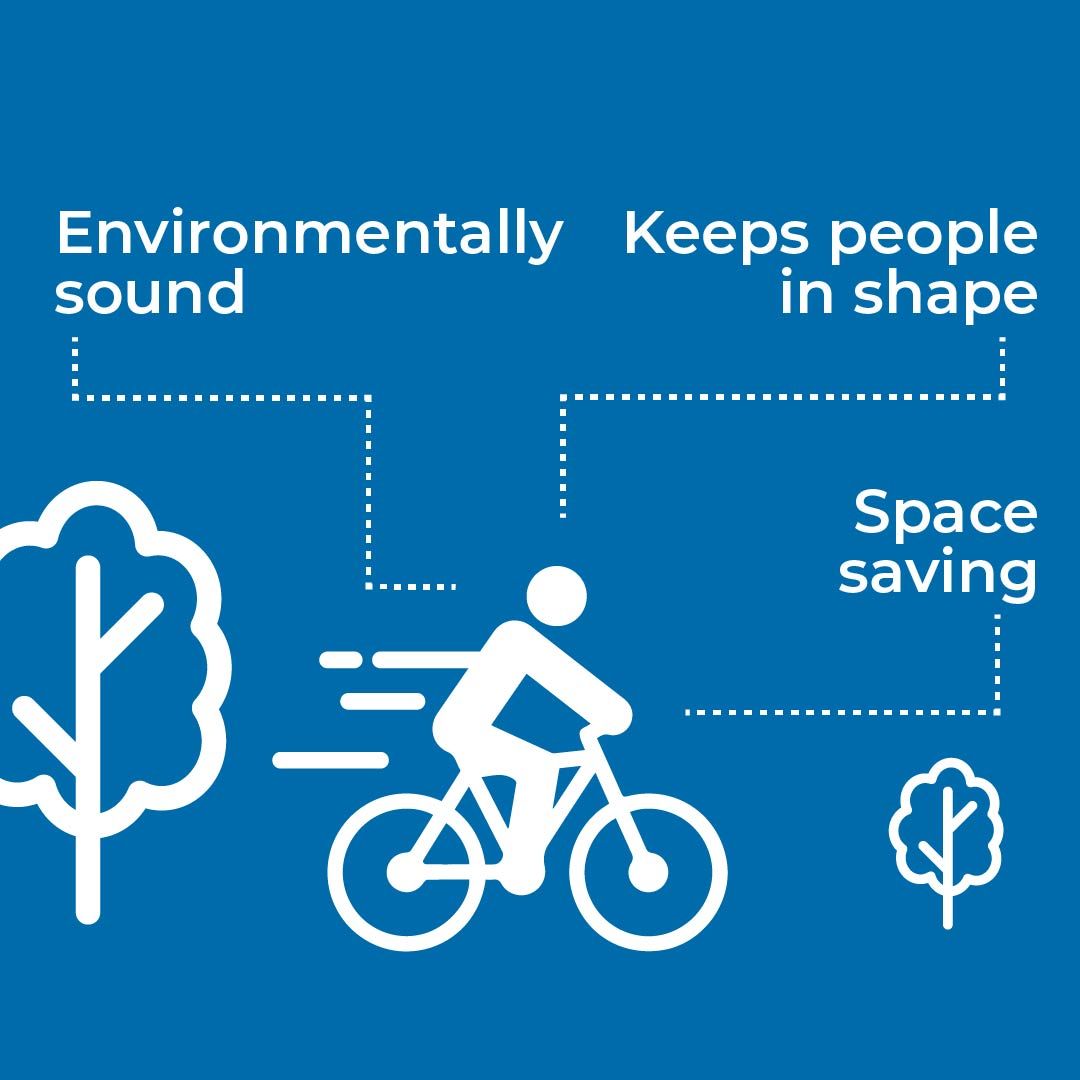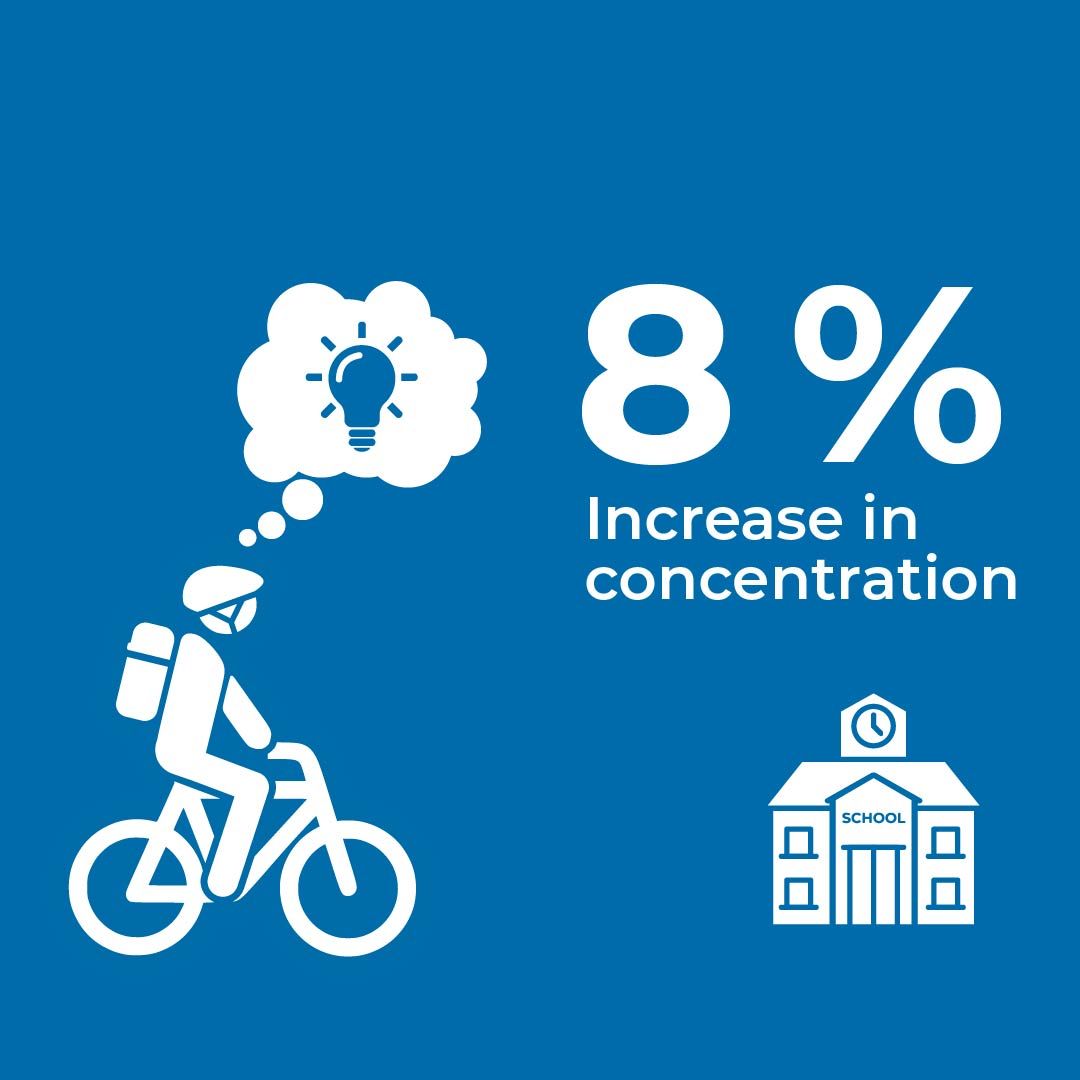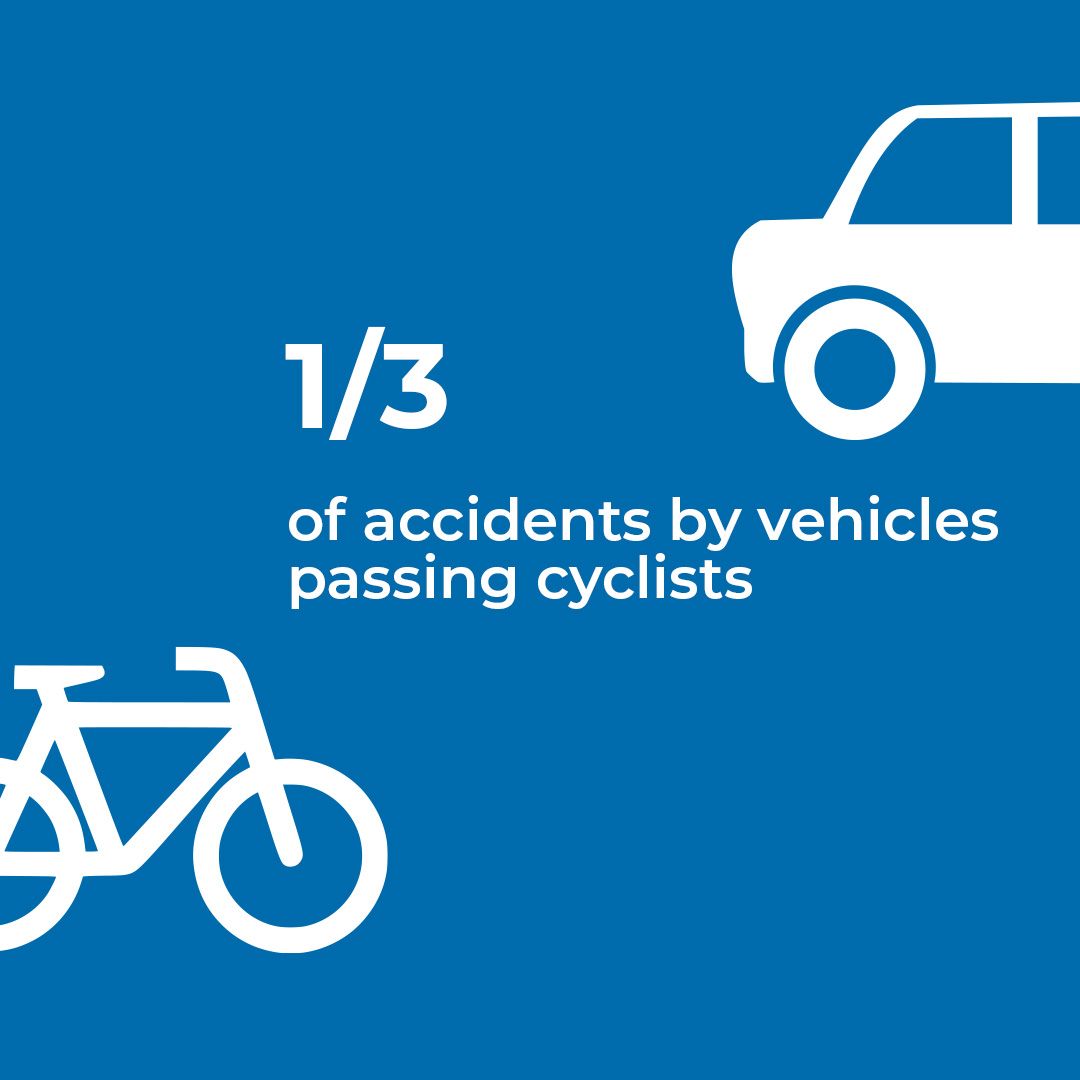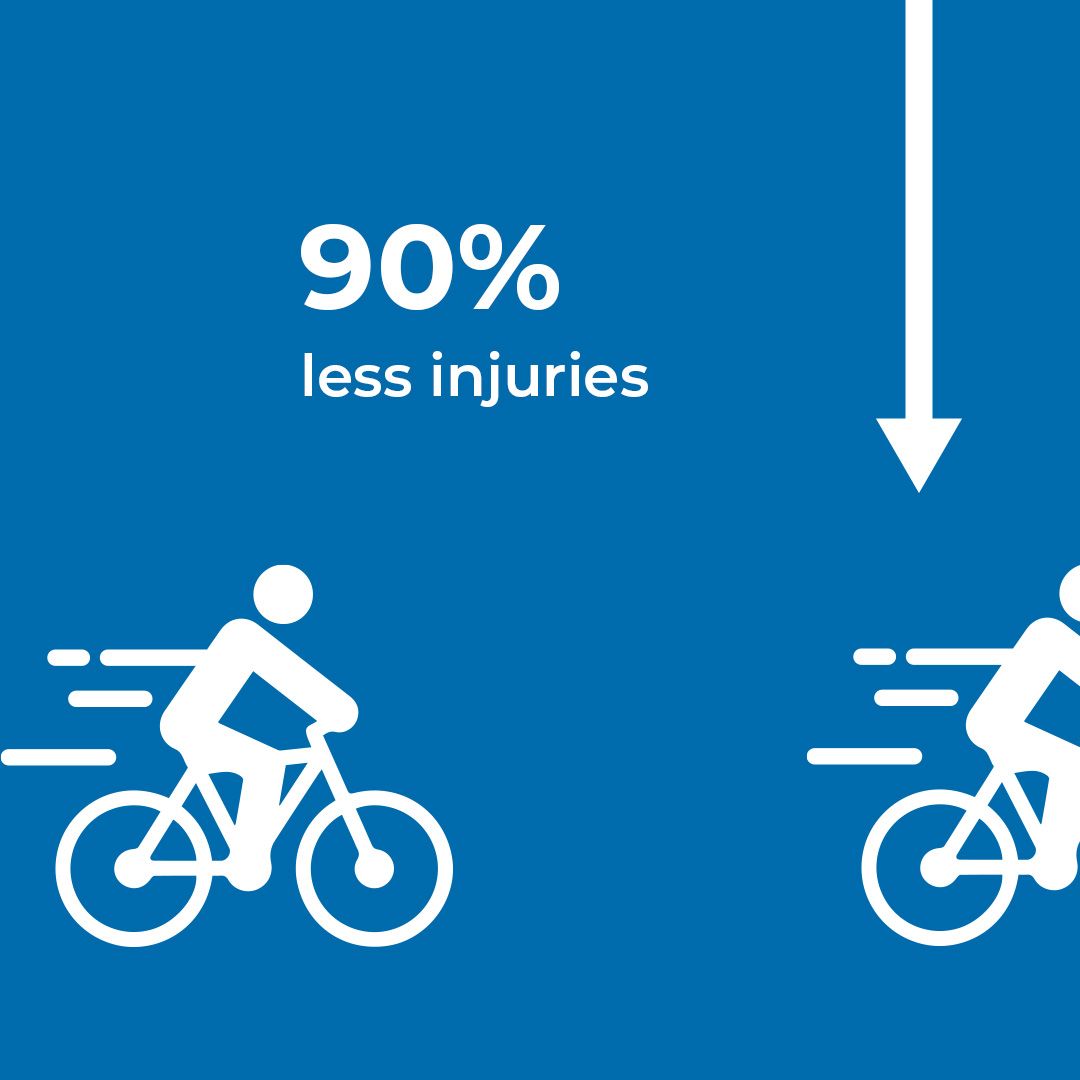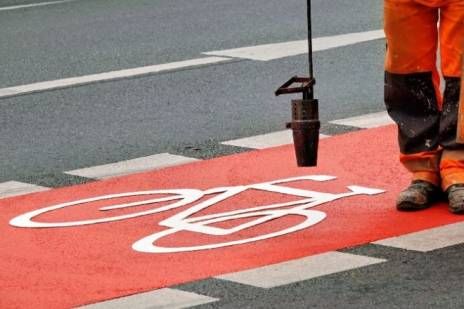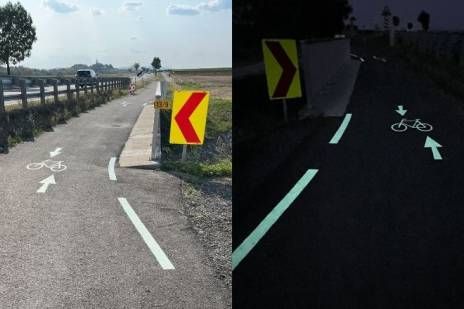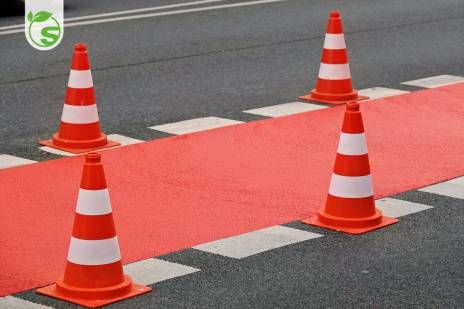Safe Infrastructure
More Safety for Cyclists

“Micromobility is booming! Bicycles are increasingly becoming a means of transport for everyday travel. However, optimizing safety remains a challenge, especially for bike lanes which are directly adjacent to lanes for motorized traffic. Clearly visible markings and colour separations are ways to minimize risks.”
André Peiter, Sales, SWARCO Road Marking Systems
Safety through Visibility
More and more people use a bicycle for everyday travel. However, the growing number of cyclists also comes with a higher risk of road traffic accidents, as shown by a study conducted by the European Transport Safety Council (ETSC). Unlike car users, cyclists do not have a protective shell around them. For this reason, bike lanes must offer them greater protection. Coloured bike lanes are ways to minimize risks not just for cyclists, but for all road users. They signal to both drivers and pedestrians that the marked area is reserved for cyclists. This helps prevent collisions and severe accidents. This visual separation also ensures that motorists and delivery personnel don’t use bike lanes as parking spaces or otherwise occupy them with their vehicles.
SWARCO Road Marking Systems’ comprehensive portfolio offers a variety of solutions for area markings and visual designs. While bike lanes in green have a natural effect, red-coloured sections alert to potentially dangerous areas. Pictograms made of preformed thermoplastics are directly in the cyclist’s field of vision and are therefore easy to see.
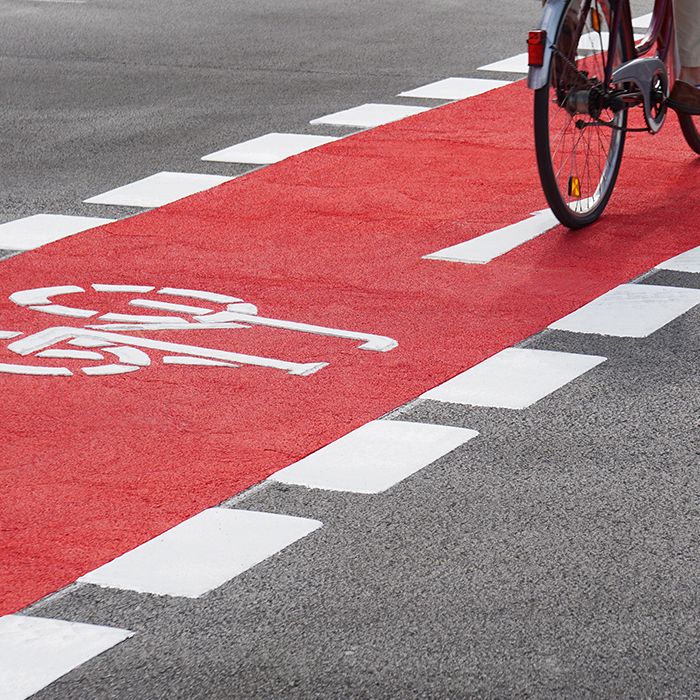
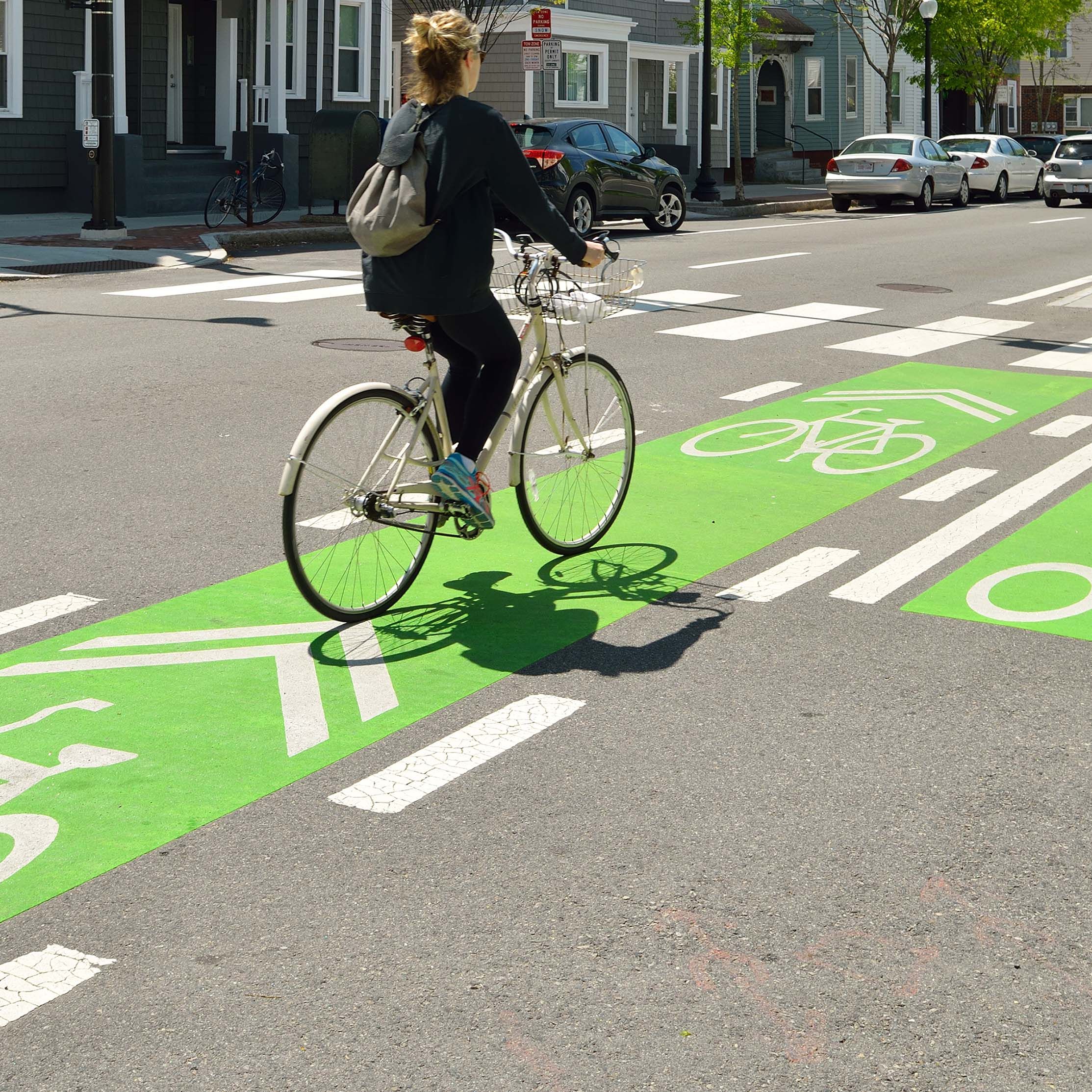
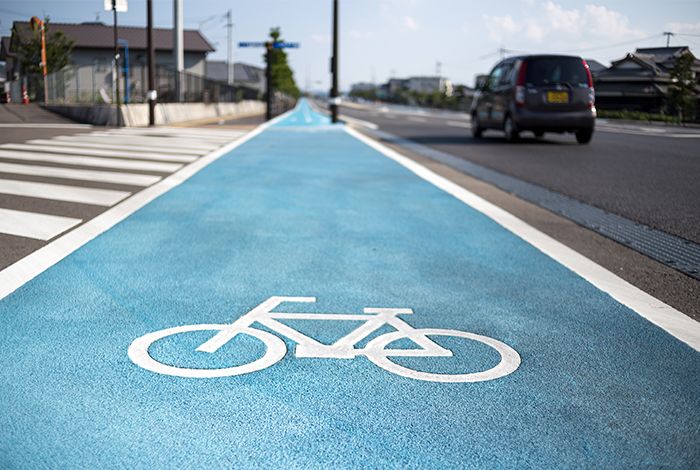
Choose the Right Solution
When choosing the marking systems, location, traffic intensity, cost-effectiveness and environmental compatibility must all be factored in. In urban road traffic, cold plastics and thermoplastics are recommended as they are both durable and safe, even in slippery conditions.
Particular attention should be paid to the anti-skid properties of the surface. Depending on the marking material used, anti-skid additives (e.g. quartz sand, coloured sand, glass granulate) will either be added during production or as drop-on material.
The Benefits of Bike Lanes
Safety for Cyclists
Putting a protected bike lane on the street reduces the injury risk per bike trip by 28 percent.
Where lanes and paths are absent, bicyclists become more concerned for their personal safety.
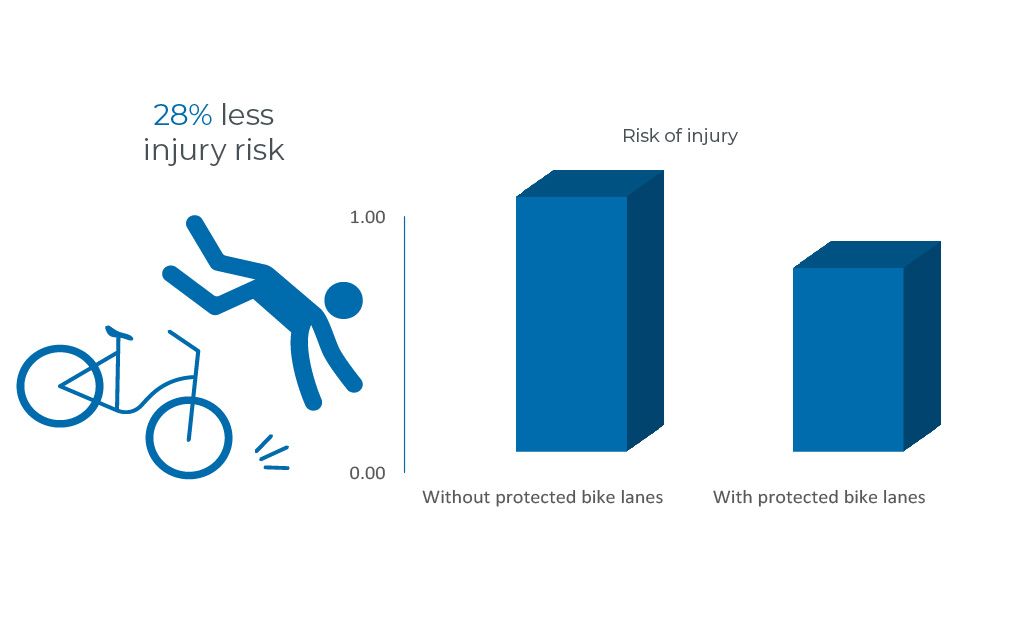
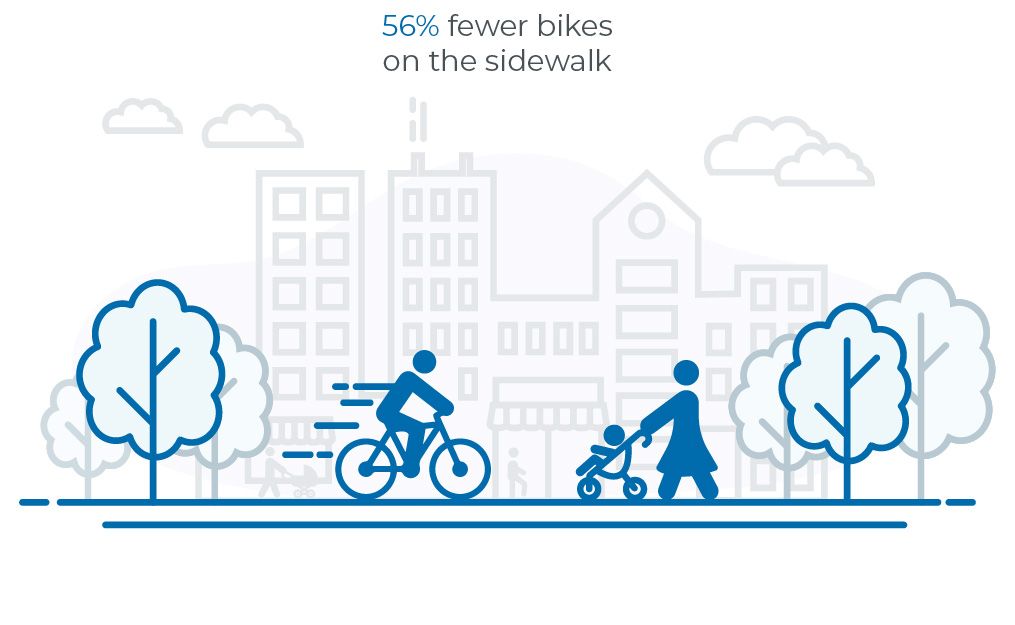
Safety for Pedestrians
People biking on sidewalks are trying to ride on the protected bike lane that isn’t there. Adding a protected bike lane immediately reduces sidewalk riding by 56 percent.
Protected bike lanes add also another layer of safety for pedestrians trying to cross the street.
Driving Less Stressful
Protected bike lanes benefit everyone on the street – bicyclists, pedestrians, and even motorists. Among non-biking adults, surveys show that 79 percent prefer driving on a street with a protected bike lane versus a 68 percent preferring a street with no bike markings.
